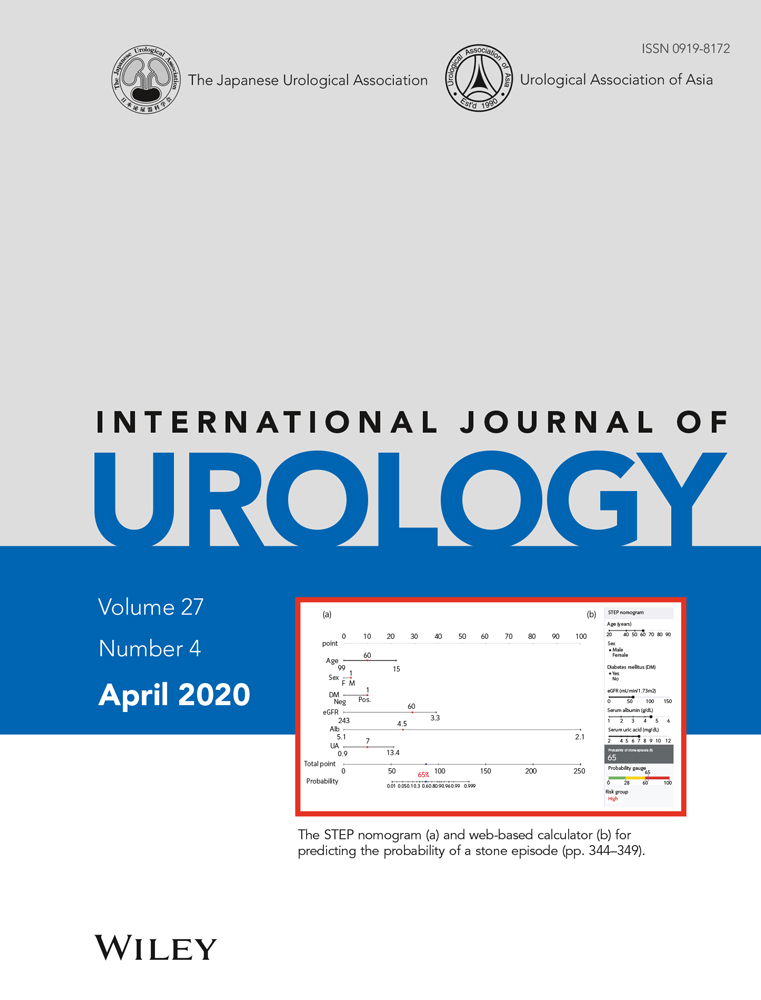Change in irrigation flow through a flexible ureteroscope with various devices in the working channel: Comparison between an automatic irrigation pump and gravity-based irrigation
Abstract
Objectives
To evaluate the change in the irrigation flow with various instruments in the working channel of a flexible ureteroscope by two automatic irrigation pumps and gravity-based irrigation in an ex vivo setting.
Methods
We used two automatic irrigation pumps: the Endoflow II and the UROMAT Endoscopic Automatic System for Irrigation and gravity-based irrigation. A flexible ureteroscope was connected to an irrigation tube with a working channel. The other side of the irrigation tube was attached to each automatic irrigation pump, which was connected with a 2-L saline bag or to a 2-L saline bag directly in case of gravity pressure. The flow volume from the working channel was measured three times for 30 s at various irrigation pressure settings, both when the working channel was unoccupied and occupied with various instruments.
Results
The irrigation flow steadily increased as the irrigation pressure in the automatic irrigation pumps increased and the saline position in gravity became higher (P < 0.05). However, the flow decreased as the size of the instrument in the working channel increased (P < 0.05). The efficiency of irrigation flow in gravity-based irrigation under the same pressure is significantly lower than one of two automatic irrigation pumps (P < 0.05). However, there was no significant difference in the efficiency of the irrigation flow between the Endoflow II and UROMAT Endoscopic Automatic System for Irrigation. The irrigation pressure setting needed to change to maintain adequate irrigation flow when using various working tools.
Conclusions
The efficiency of irrigation flow in gravity-based irrigation is significantly lower than one of two automatic irrigation pumps. The irrigation flow decreases as the size of the instrument in the working channel increases.
Conflict of interest
None declared.




